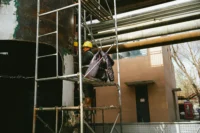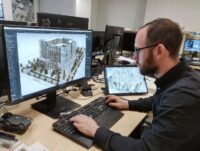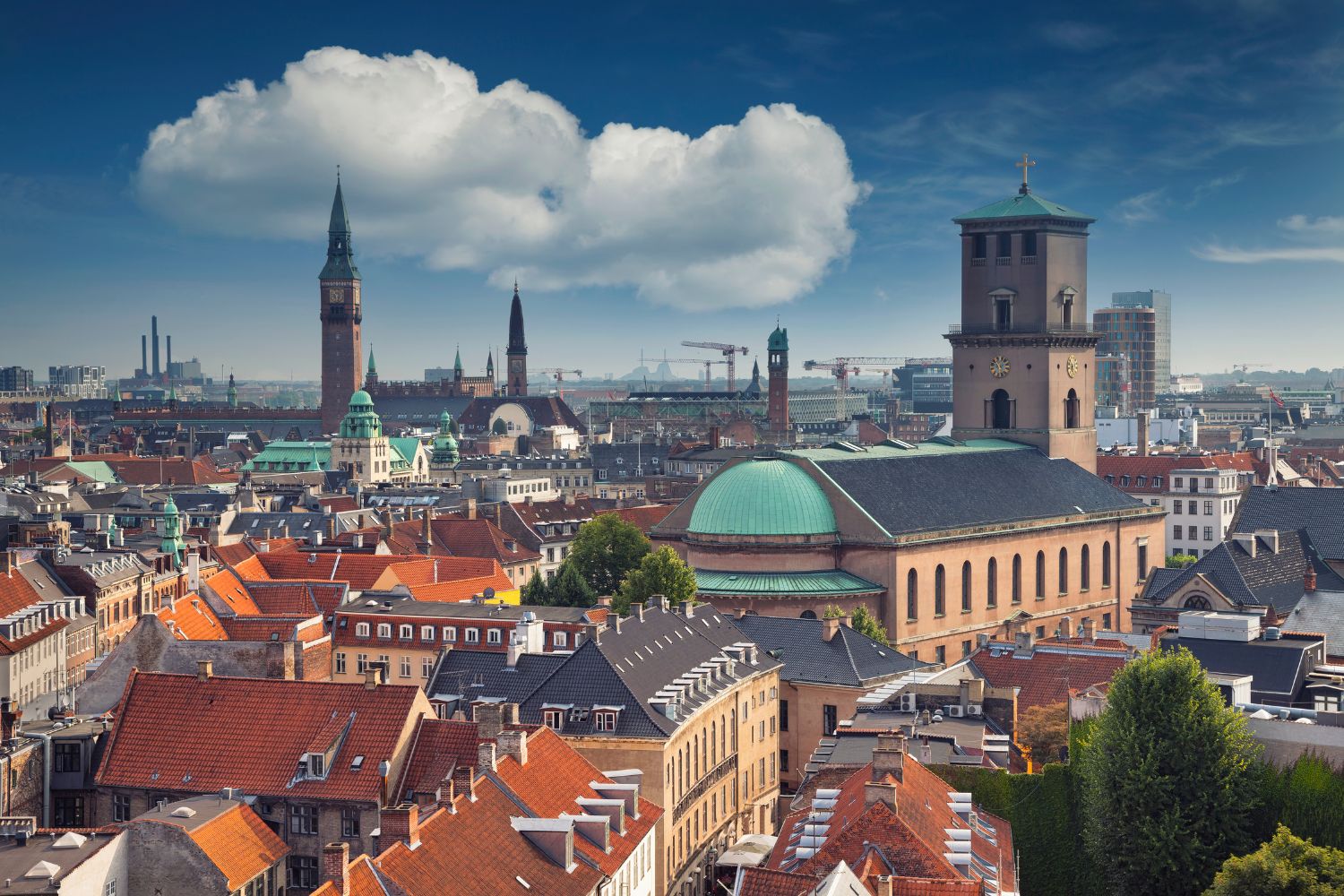- Home
- Articles
- Architectural Portfolio
- Architectral Presentation
- Inspirational Stories
- Architecture News
- Visualization
- BIM Industry
- Facade Design
- Parametric Design
- Career
- Landscape Architecture
- Construction
- Artificial Intelligence
- Sketching
- Design Softwares
- Diagrams
- Writing
- Architectural Tips
- Sustainability
- Courses
- Concept
- Technology
- History & Heritage
- Future of Architecture
- Guides & How-To
- Art & Culture
- Projects
- Interior Design
- Competitions
- Jobs
- Store
- Tools
- More
- Home
- Articles
- Architectural Portfolio
- Architectral Presentation
- Inspirational Stories
- Architecture News
- Visualization
- BIM Industry
- Facade Design
- Parametric Design
- Career
- Landscape Architecture
- Construction
- Artificial Intelligence
- Sketching
- Design Softwares
- Diagrams
- Writing
- Architectural Tips
- Sustainability
- Courses
- Concept
- Technology
- History & Heritage
- Future of Architecture
- Guides & How-To
- Art & Culture
- Projects
- Interior Design
- Competitions
- Jobs
- Store
- Tools
- More
The Role of Public Transportation in Urban Development: A Catalyst for Growth and Inclusivity
Explore the transformative role of public transportation in urban development in our latest article. Discover how effective transit systems enhance economic growth, improve quality of life, and promote sustainability in cities. Learn about the social equity aspects, environmental benefits, and the importance of integrating transit with urban planning.

Public transportation is more than just a means to get from point A to point B; it’s a crucial pillar of urban development. As cities expand and populations grow, effective transit systems become essential for fostering economic growth and enhancing quality of life. We’ve seen how well-planned public transit can transform urban landscapes, making them more accessible and sustainable.
By connecting neighborhoods and reducing traffic congestion, public transportation promotes inclusivity and environmental responsibility. It encourages people to leave their cars behind, which not only cuts down on emissions but also revitalizes local economies. In this article, we’ll explore the multifaceted role of public transportation in shaping vibrant urban environments and the lasting impact it has on our cities.

Table of Contents
ToggleThe Importance of Public Transportation
Public transportation serves as a cornerstone in urban development, influencing multiple aspects of city life. From driving economic benefits to fostering social equity, its role extends far beyond just getting people from point A to point B.

Economic Benefits
Public transportation generates significant economic growth in urban areas. Cities with robust transit systems experience a rise in property values, leading to increased tax revenues. According to the American Public Transportation Association, public transit generates approximately $4 for every dollar invested, showcasing its high return on investment. Moreover, accessible transportation creates job opportunities by linking residents to employment centers, reducing travel times, and enhancing productivity. Public transit systems also attract businesses wanting to capitalize on a larger customer base, further stimulating local economies.
Social Equity
Public transportation promotes social equity by ensuring mobility for all socioeconomic groups. Transit systems allow low-income individuals access to employment, education, and essential services, thus reducing the reliance on personal vehicles. By connecting marginalized communities to urban resources, public transportation helps bridge economic disparities. Furthermore, equitable transit options encourage diverse urban development, ensuring that all residents benefit from the city’s growth. Cities that prioritize public transportation foster inclusive environments that stimulate community participation and enhance overall well-being.
Environmental Impact
Public transportation plays a critical role in minimizing environmental harm. By reducing reliance on personal vehicles, transit systems significantly lower greenhouse gas emissions and promote sustainable practices.

Reduction of Carbon Footprint
Public transportation contributes to a marked reduction in carbon emissions. Bus and train systems emit less CO2 per passenger mile compared to personal vehicles. According to the American Public Transportation Association, public transit saves about 37 million metric tons of carbon dioxide annually. Cities that invest in transit options see a decrease in vehicular traffic, resulting in cleaner air and healthier urban environments.
Promotion of Sustainable Practices
Public transport supports various sustainable practices within urban areas. Transit-oriented development focuses on compact, mixed-use neighborhoods, encouraging walking, cycling, and public transport usage. By designing urban spaces around transit infrastructure, we foster reduced energy consumption and promote environmentally friendly behaviors. Additionally, integrated transit systems discourage urban sprawl and preserve green spaces, further enhancing urban sustainability efforts.
Infrastructure Development
Public transportation infrastructure plays a crucial role in shaping urban growth and enhancing city life. Its integration with urban planning fosters organized, sustainable development.

Integration with Urban Planning
Effective integration of public transportation with urban planning yields a cohesive urban landscape. We observe successful cities adopting comprehensive transit-oriented development strategies. These strategies prioritize proximity to transit stations, encouraging mixed-use spaces that blend residential, commercial, and recreational areas. By designing neighborhoods around public transit, cities reduce the need for cars, thereby promoting walkability and cycling, which enhances public health.
Additionally, we find that strategic investment in transit infrastructure attracts businesses and developers. For instance, cities with well-planned transit systems tend to experience a 20% increase in nearby property values, directly benefiting local economies. Seamless connections between different transit modes—such as buses, trains, and bicycles—ensure a convenient and efficient travel experience, which drives ridership and strengthens local communities.
Challenges and Solutions
Despite the benefits, integrating public transportation into urban development faces significant challenges. One major challenge is funding and financing transit projects. As cities grapple with budget constraints, identifying sustainable funding sources remains essential. Innovative funding methods, such as public-private partnerships, contribute to constructing and maintaining infrastructure.
Another challenge involves land use regulations that hinder the development of transit-friendly neighborhoods. We advocate for revising zoning laws to promote higher-density developments near transit hubs. A mixed-use approach encourages diverse housing options and minimizes urban sprawl.
Lastly, we address community resistance to new transit initiatives. Engaging local stakeholders early in the planning process fosters a sense of ownership and acceptance. Communities that participate in decision-making are more likely to support and use public transit systems.
Strategically navigating these challenges contributes to building resilient urban environments where public transportation enhances infrastructure development.
Case Studies
Public transportation systems around the world offer valuable insights into their role in urban development. Examining successful and unsuccessful projects provides lessons that can enhance future planning efforts.

Successful Global Examples
-
London, United Kingdom
London’s Transport for London (TfL) integrates subway, bus, and tram services, creating a cohesive transit experience. This multimodal approach reduces congestion, increases property values, and encourages sustainable urban growth.
-
Tokyo, Japan
Tokyo’s extensive rail network, including the Shinkansen, exemplifies efficiency. Timely services connect diverse regions, promote economic activity, and foster high-density developments, making the city one of the most accessible in the world.
-
Curitiba, Brazil
Curitiba’s Bus Rapid Transit (BRT) system demonstrates innovative low-cost solutions. High-capacity buses operate on dedicated lanes, minimizing travel times and reducing emissions while enhancing urban accessibility and land use efficiency.
-
Portland, Oregon, USA
Portland’s integrated transit system encourages active transportation. Light rail and streetcar connections support mixed-use development, reducing dependency on cars and cultivating vibrant neighborhoods that promote inclusivity and community engagement.
Lessons Learned from Failed Projects
-
Los Angeles, California, USA
The initial Metro system faced challenges due to low ridership and poor connectivity. Lack of integration between modes and limited service to underserved areas resulted in inefficiencies, highlighting the need for comprehensive planning and stakeholder input.
-
Kansas City, Missouri, USA
Kansas City launched a streetcar system without adequate funding or integration into existing transit services. Insufficient outreach led to low public support, demonstrating that community engagement and clear communication are vital for success.
-
Atlanta, Georgia, USA
Atlanta’s transit expansion faced criticism due to its limited reach and underinvestment. The focus on highways over public transit contributed to a car-dependent culture. This underscores the importance of prioritizing public transit in urban planning initiatives.
-
Boston, Massachusetts, USA
Boston’s Big Dig project, initially aimed at reducing congestion, faced significant budget overruns and delays. Poor planning and management illustrated the necessity of establishing realistic timelines and financial structures in large-scale transit projects.
Conclusion
Public transportation stands as a cornerstone of urban development, shaping cities and enhancing the quality of life for residents. We recognize its role extends beyond simple mobility; it’s a critical factor in economic vitality, social equity, and environmental sustainability. Effective transit systems catalyze economic growth by boosting property values and generating increased tax revenues. According to the American Public Transportation Association, every dollar invested in public transit yields approximately $4 in returns, showcasing our pathway to robust financial health.
We also highlight the social equity dimensions of public transportation. Accessible transit systems empower low-income individuals by connecting them to vital resources like jobs and education, which is essential for bridging economic disparities. This fosters inclusivity and promotes diverse, thriving communities.
From an environmental perspective, public transportation significantly reduces greenhouse gas emissions. By lessening the dependence on personal vehicles, we encourage sustainable practices and advance transit-oriented development, which further minimizes the ecological footprint of urban areas.
Our exploration includes the pivotal role of public transit infrastructure in urban growth. Integrating transit systems with urban planning fosters organized, sustainable development and promotes vibrant mixed-use spaces. Strategic investments in transportation can attract businesses, igniting local economies and elevating community life.
While we acknowledge the challenges of integrating public transportation into urban settings—such as funding limitations and land use regulations—advocating for innovative solutions is crucial. This includes advocating for revised zoning laws and engaging with community stakeholders to develop resilient urban environments, where public transit serves as a catalyst for infrastructural advancement.
Lastly, we draw lessons from global case studies, illustrating successful—and, at times, unsuccessful—public transportation implementations. Successful systems, like those in London and Tokyo, highlight the importance of cohesive transit experiences, while failures in cities such as Los Angeles and Atlanta remind us of the necessity for comprehensive planning and community involvement. Through these insights, we underscore the transformative power of public transportation in cultivating vibrant urban landscapes with lasting impacts.
- Benefits of public transit systems
- Catalyst for urban growth public transit
- Enhancing urban mobility
- Future of public transportation
- Impact of public transportation on city growth
- Inclusive urban development strategies
- Innovations in urban transportation
- Public transit accessibility
- Public transit and infrastructure development
- Public transportation and urban development
- Public transportation and urban inclusivity
- Public transportation efficiency
- Public transportation initiatives
- Public transportation planning
- Role of public transit in cities
- Smart city transportation systems
- Sustainable urban transportation
- Urban development public transit integration
- Urban growth and public transport
- Urban transportation solutions
Submit your architectural projects
Follow these steps for submission your project. Submission FormLatest Posts
The World’s Largest Cities: How Mega‑Urban Centers Are Evolving
The world’s largest cities are evolving fast—discover how mega-urban centers grow, manage...
How China’s Urban Voids Are Transforming City Life
China’s urban voids are reshaping city life—see how under-bridge belts, night markets,...
How DeepSeek AI Is Transforming Architecture and Urban Design Workflows
DeepSeek AI represents a new generation of architectural intelligence, shifting artificial intelligence...
Copenhagen Named the Happiest City in the World in 2025
Copenhagen has been named the happiest city in the world in 2025...












Leave a comment